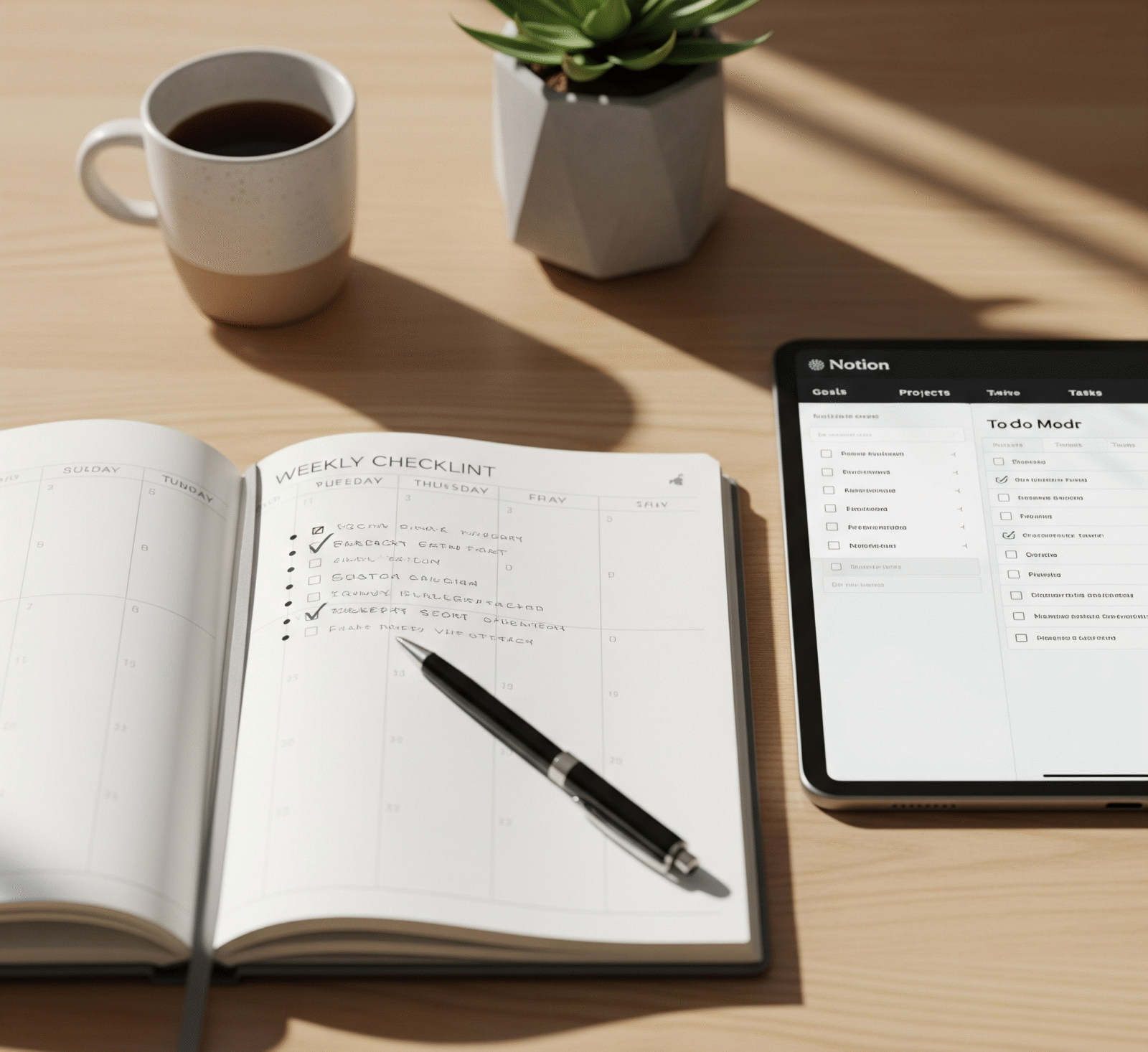Simple Strategies for Turning Notes Into Lasting Knowledge
Ever found yourself scribbling furiously during a meeting or lecture, only to glance back at your notes later and think, “What on earth did I mean by that?” I’ve been there more times than I care to admit. Our brains are full of sparks and half-thoughts, but unless we capture them in a way that lasts, they fade quickly.
That’s where the idea of smart notes comes in. Smart notes are more than quick scribbles—they’re systems of thought that you can return to, learn from, and actually use. Done well, they become tools for focus, creativity, and clarity. Done poorly, they become another forgotten notebook gathering dust on a shelf.
In this article, I’ll walk you through how to take smart notes that actually stick—notes you’ll want to return to, notes that clarify ideas instead of burying them, and notes that help you connect the dots in your work and life. Think of this as a friendly guide to transforming your note-taking into something that works with your brain, not against it.
Why Smart Notes Matter
Taking notes isn’t just about remembering—it’s about thinking. When you write things down, you’re not only capturing information, you’re also processing it, reshaping it into something you understand.
The problem? Most of us still take notes as if we’re stenographers. We transcribe, word for word, hoping that volume equals clarity. But later, when we look back, all we see is noise.
Smart notes cut through that noise. They:
- Simplify complex ideas into language you understand.
- Highlight what truly matters instead of everything at once.
- Create connections between concepts over time.
Think of them as a garden: you don’t throw every seed into the ground; you choose what to plant, nurture it, and let it grow.
Principle 1: Write Notes for Your Future Self
When you take notes, don’t just think about today—you’re writing for the version of you who will look at them weeks or months from now.
Instead of capturing every word, ask: How can I phrase this so that “future me” will immediately understand it?
What This Looks Like in Practice
- Write in full sentences, not random fragments.
- Add a quick summary in your own words.
- Note why the idea matters, not just what it is.
For example: instead of writing “Working memory limited, 4–7 items”, you might write: “Working memory is like a mental post-it note—it can only hold about 4–7 things. Important for designing tasks and avoiding overload.”
Key takeaway: Good notes aren’t transcripts—they’re mini-lessons you’ve written to yourself.
Principle 2: Connect, Don’t Collect
Most people collect notes like squirrels collect acorns: a big stash they never touch again. But the real magic happens when you start connecting your notes.
Connections transform isolated facts into living knowledge. You’re no longer dealing with loose puzzle pieces—you’re building the bigger picture.
Ways to Create Connections
- Use tags or categories (e.g., “focus,” “creativity,” “productivity”).
- Link one note to another (“This reminds me of the research on flow state”).
- Review your notes weekly and look for patterns.
One of my favorite systems here is the Zettelkasten method, which encourages you to link every note to at least one other. Think of it as weaving a web where each idea strengthens the whole.
Principle 3: Keep It Short, Sharp, and Useful
Smart notes don’t need to be long. In fact, shorter is better. The goal isn’t to capture everything—it’s to capture the essence.
When you’re tempted to write down a page of text, pause. Ask yourself: What’s the core idea here? What’s worth carrying forward?
Quick Guidelines for Useful Notes
- One note = one idea. Don’t cram five points into one paragraph.
- Use keywords that spark memory.
- Format for clarity: bullets, bold, and spacing make notes easier to revisit.
Think of notes like ingredients in a recipe—you want them clean and simple, so you can combine them into something new later.
Principle 4: Capture Context, Not Just Content
Ever stumble across an old note and think, Why did I even write this down? That’s what happens when you don’t capture context.
Context means including where the idea came from, why you wrote it, and how you might use it.
For example, if you’re reading a book, don’t just copy the quote. Add:
- The book title and author.
- Why the quote stood out.
- How it connects to something you’re working on.
Context makes notes alive. Without it, they’re just orphaned sentences.
Principle 5: Build a Routine Around Your Notes
Smart notes aren’t just about how you take them—they’re about how you use them. That requires a routine.
Here’s a simple rhythm:
Daily
- Capture quick notes throughout the day (ideas, insights, quotes).
- Write them in a way “future you” will understand.
Weekly
- Review your notes.
- Connect related ideas.
- Turn useful notes into action steps or bigger projects.
Monthly
- Revisit old notes to see what still feels relevant.
- Look for recurring patterns or themes.
Key takeaway: Notes don’t work unless you work with them.
Tools for Taking Smart Notes
There’s no single “right” tool—it depends on your style. But here are some tested favorites:
- Analog lovers: Use a notebook + index system. Leuchtturm1917 or Moleskine are reliable.
- Digital explorers: Try Notion, Obsidian, or Evernote. (Affiliate link: I personally use Notion—it’s flexible enough for both planning and note storage.)
- Hybrid approach: Capture quick ideas on paper, then transfer key ones into your digital system.
Whatever tool you choose, the principle is the same: your notes should be easy to find, easy to understand, and easy to use.
Common Mistakes to Avoid
When it comes to smart notes, it’s easy to get lost in the weeds. Here are some traps to watch for:
- Copy-pasting everything. If you don’t rewrite ideas in your own words, they won’t stick.
- Overcomplicating the system. If your note-taking method feels like a second job, simplify.
- Never reviewing your notes. The magic happens in reflection, not just collection.
- Chasing tools over habits. A shiny new app won’t fix poor habits—it’ll just decorate them.
Turning Notes Into Action
Smart notes aren’t just about storing knowledge—they’re about using it. Once you’ve built a library of connected notes, you can:
- Turn them into articles, presentations, or creative projects.
- Use them as decision-making tools when facing complex problems.
- Build a knowledge base you can rely on for years.
I’ve often found that the best ideas for writing or problem-solving come not from “new” research, but from revisiting my own notes. They act like quiet companions, reminding me of insights I’ve already uncovered.
Conclusion
Taking smart notes that stick isn’t about writing more—it’s about writing better. It’s about thinking while you write, capturing ideas in your own words, and building a web of connections that grows over time.
Here’s the essence:
- Write for your future self.
- Connect your notes.
- Keep them short, sharp, and contextual.
- Build a routine to use them.
The payoff? A library of knowledge that doesn’t just sit there but actively supports your learning, focus, and creativity.
If you’re ready to take this further, I recommend experimenting with a digital system like Notion (affiliate link)—it’s been invaluable for my own workflow. Or, if you’re more tactile, pick up a good notebook and start tonight.
Smart notes are less about the tool, and more about the mindset. The moment you start writing for understanding, not memory, everything changes.





